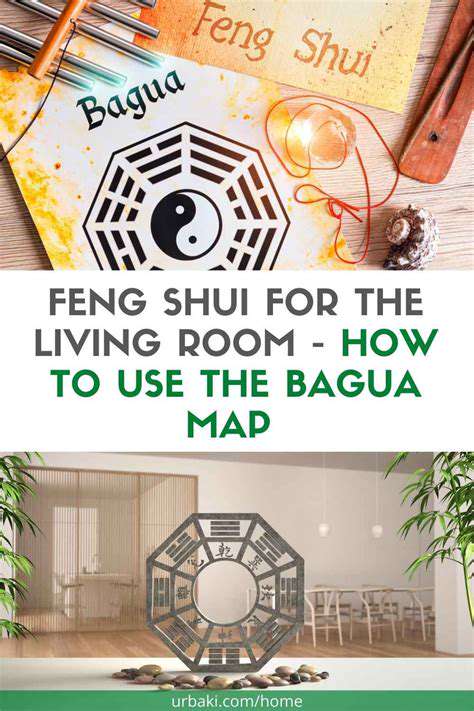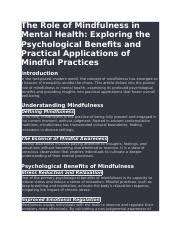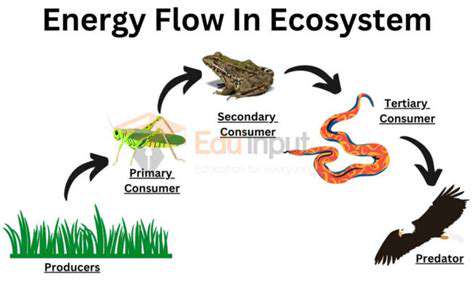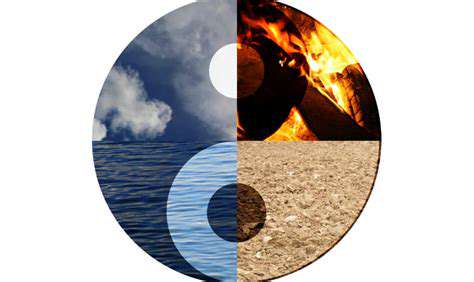Essential Feng Shui Principles for Harmonizing Your Home
The Five Elements: Wood, Fire, Earth, Metal, and Water
Understanding the Wood Element
The Wood element represents growth, vitality, and expansion. It serves as a foundational component in the practice of Feng Shui and paints a picture of nature’s life force. The energy associated with Wood is like a tree reaching for the sky, embodying creativity and renewal, making it essential for cultivating a nurturing environment in your home.
Incorporating the Wood element into your living space can significantly enhance your emotional well-being and mental clarity. Wooden furnishings, indoor plants, and vibrant colors like green are all ways to attract this dynamic energy. Consider adding potted plants or using wooden decor items to invite growth and freshness into your surroundings.
When representing Wood in Feng Shui, it is beneficial to focus not only on physical representations but also on the spirit of Wood. This means fostering creativity, exploring new ideas, and nurturing relationships—allowing the Wood energy to flourish in both your environment and your life.
Lastly, balancing Wood with other elements is crucial. Too much Wood energy can lead to chaos, akin to a forest overtaking an area. Striking the right balance among Wood and other elements like Fire, Earth, Metal, and Water is fundamental to creating a harmonious environment.
Exploring the Fire Element
The Fire element is synonymous with passion, energy, and transformation. It symbolizes the warmth of relationships and the drive to pursue goals. In Feng Shui, Fire brings vigor to a space, making it an essential element for those aiming to enhance their motivation and enthusiasm in life.
To incorporate Fire energy into your home, consider using colors such as red, orange, and yellow. These hues can be introduced through artwork, textiles, or decorative items, setting an invigorating atmosphere. Additionally, lighting candles or utilizing lamps with warm lighting can be effective ways to embody Fire’s transformative energy.
However, it is essential to manage the intensity of Fire. Too much Fire can lead to feelings of agitation or overwhelm. Therefore, balancing it with cooling elements, especially Water or Earth, can help stabilize its potency, ensuring it supports rather than disrupts harmony.
In a psychological sense, the Fire element encourages taking risks and embracing change. By welcoming Fire into your environment, you not only invigorate your space but also bolster your personal and professional aspirations. This makes it crucial for those in creative fields or for anyone seeking to ignite their passions.
Embracing the Earth Element
The Earth element embodies stability, nourishment, and grounding energy. It acts as a soothing presence in Feng Shui, promoting balance between various energies within a space. Earth offers a sense of security and is vital for nurturing relationships and personal growth.
In your home, creating Earth energy can be achieved through the incorporation of earthy colors like beige, sandy tones, and soft browns. Utilizing ceramic or clay décor, stones, and crystals can also help establish a strong Earth presence. This not only enhances the aesthetic of your space but also cultivates a comforting atmosphere.
The Earth element is particularly important for creating communal spaces for family gathering, as it fosters connections and encourages open communication. Arranging furniture in a circular formation can create a sense of unity, supported by Earth’s nurturing characteristics, ensuring everyone feels included.
Moreover, take time to reflect on your personal relationship with the Earth element. Engage in activities that ground you, such as gardening or practicing mindfulness. By integrating these practices, you can enhance your physical space and connect with the Earth on a deeper level, ultimately promoting emotional stability and inner peace.
Balancing the Metal Element
The Metal element signifies clarity, precision, and structure. It embodies a sense of responsibility and is closely associated with reflection and introspection. In Feng Shui, incorporating Metal can create spaces that encourage organization and focus, promoting a harmonious environment.
To invite the energy of Metal into your home, consider utilizing metallic objects, such as silver, gold, and copper decor pieces. These elements can include anything from sculptures to picture frames, effectively channeling Metal’s clarity and strength into your environment. Incorporating circular shapes is also beneficial, as they correlate with the associated qualities of Metal.
Beyond physical manifestations, Metal energy also inspires efficiency and organization. Employ strategies to declutter spaces, ensuring that your home feels free of distractions, which fosters communication and personal growth. By simplifying your environment, you allow Metal's energy to flow freely, enhancing peace in your surroundings.
Moreover, finding a balance between Metal and other elements is key. While Metal can add structure, too much can lead to rigidity and coldness in a space. Thus, incorporating softer materials and elements such as Wood can cultivate a more rounded feeling, ensuring that your home remains both efficient and inviting.
Harnessing the Water Element
The Water element is a powerful symbol of abundance, flow, and emotional depth. It represents adaptability and the ability to navigate life’s challenges. In Feng Shui, the Water element is essential for creating a soothing ambiance and is often associated with prosperity and growth.
Incorporate Water energy in your home through the use of colors like blue and black, which can be realized through textiles or wall paint. Water features, such as fountains or aquariums, can serve as striking focal points in your space, promoting tranquility and the flow of wealth and positive energy.
In addition to visual representations, Water can influence emotional well-being in profound ways. Establish areas in your home for contemplation, allowing time and space for self-reflection. This practice can help you connect with your deeper emotions, providing a pathway for healing and personal evolution.
While Water is a catalyst for peace, too much can lead to feelings of stagnation or overwhelm. Hence, it is vital to balance it with Earth elements to establish a solid foundation. By understanding how to mix and match the elements purposefully, you can create a harmonious space that nourishes your spirit while fostering both emotional and financial abundance.
The Importance of Chi and Energy Flow
Understanding Chi: The Life Force Energy
Chi, often referred to as the life force, is a fundamental concept in Feng Shui, representing the vital energy that flows through everything in our environment. It is believed that Chi, synonymous with energy and spirit, not only influences our physical surroundings but also dictates how we feel and interact within those spaces. Understanding how Chi operates can lead to a more harmonious existence, improving our overall well-being and mental clarity.
Incorporating Chi into our daily lives involves recognizing its presence and flow in our homes, workplaces, and outdoor environments. Properly directing Chi can lead to positive energy, which enhances the atmosphere and mood in any setting. By creating spaces that foster the smooth flow of Chi, we cultivate an environment that promotes health, prosperity, and tranquility, all integral elements when applying Feng Shui principles.
The Role of Energy Flow in Feng Shui
Energy flow is critically important in Feng Shui, as it determines how Chi circulates and influences our surroundings. Blockages in the flow of energy can lead to stagnation, causing negative consequences on both physical health and emotional well-being. Ensuring that Chi is free to move and circulate throughout our homes involves strategic placement of furniture, essential décor, and the removal of any obstructions that might hinder this flow.
The arrangement of objects within a space can significantly affect the energy flow. For instance, sharp corners and heavy furniture can disrupt the natural movement of Chi, creating feelings of unease or discomfort. By using Feng Shui principles, individuals can create open, inviting spaces that allow for an uninterrupted flow of energy, leading to a more balanced and harmonious living atmosphere.
Tips for Enhancing Chi and Energy Flow
To enhance Chi and improve energy flow in your home, begin by decluttering all areas. Clutter creates a physical and visual barrier, hindering the movement of Chi and causing stagnation in your spaces. By organizing and simplifying your environment, you allow energy to flow freely, which can enhance mood and create a sense of calm and order in daily life.
Incorporating elements of nature is another effective way to boost Chi in your living areas. Plants, natural light, and water features all contribute positively to energy flow. Plants, for example, not only purify the air but also inject vibrant energy into a space, making it feel alive and welcoming. By understanding and utilizing these simple strategies, one can significantly enhance the flow of Chi, leading to a more harmonious and energized home environment.
The Bagua Map: A Blueprint for Living Spaces

Understanding the Bagua Map
The Bagua Map is a fundamental tool in Feng Shui, serving as a guide to help identify energy flows in a given space. By overlaying the Bagua Map onto your living area, you can gain insights into different life aspects, such as wealth, health, and relationships. This layout helps individuals understand the energetic dimensions of their environments and aligns them with their personal goals.
Each area of the Bagua Map corresponds to specific themes and elements. For instance, the Wealth area is associated with prosperity, while the Relationship sector emphasizes connections with others. Utilizing the Bagua Map effectively can illuminate areas of imbalance, prompting necessary changes to enhance the harmony of your living space. By recognizing these energies, you can make strategic decisions to invite positivity into your life.
To get started with the Bagua Map, it’s crucial to know your space's orientation. Generally, the map is aligned with the main entrance of a building, with specific sections connected to the cardinal directions. Understanding how to properly position the Bagua Map is essential for optimizing the energy flow and achieving desired results in various life domains.
Applying the Bagua Map to Your Home
Once you have the Bagua Map aligned with your home, it’s time to assess each area and its corresponding elements. For instance, if the Health area is lacking vitality, consider introducing plants and natural light to enhance the energy. Decorative changes like adding mirrors or vibrant colors can significantly uplift an area’s energy, leading to improved well-being and vitality throughout the living space.
The Bagua Map is not only applicable to the interior of a house; it can also be used in outdoor spaces. Elements such as water features or garden layouts can be strategically placed to energize certain areas of your property. When applied thoughtfully, the Bagua Map can create a holistic environment that facilitates emotional and spiritual well-being.
Moreover, personalizing each sector of the Bagua Map based on individual aspirations is key. For families, enhancing the Family & Community section can foster stronger bonds. This customization ensures that the Bagua Map serves your unique needs, reinforcing the overall goal of aligning your living space with your intentions.
Common Misconceptions About the Bagua Map
One common misconception about the Bagua Map is that it requires extensive renovations to be effective. In reality, many adjustments are simple and can be achieved with small changes like repositioning furniture or adding decor that resonates with the Bagua principles. This means anyone can harmonize their space without drastic measures or expenses.
Another misunderstanding relates to the belief that Feng Shui is purely about aesthetics. While visual appeal is important, the true essence lies in the energetic quality of the space. Understanding and applying the deeper meanings of the Bagua Map allows for genuine transformation and can lead to remarkable shifts in daily life.
Lastly, people often think the Bagua Map is static and unchanging. In reality, as life circumstances evolve, so too should the map's application. Observing changes in aspects like career or relationships may mean it's time to adjust the energy in those areas accordingly. Staying attuned to these shifts allows for continuous growth and alignment with personal goals.
Enhancing Your Environment with the Bagua Map
To fully harness the potential of the Bagua Map, consider incorporating elements from each section that resonate with you. For example, adding candles or crystals in the Fame area can amplify your presence and recognition. Such intentional enhancements can activate the specific energies needed for growth and success in various aspects of your life.
Engaging with the Bagua Map also involves regular maintenance and observation. Periodically reviewing each area helps ensure that the energies remain vibrant and supportive of your objectives. Little tweaks, like refreshing decor or shifting furniture, can reignite the space’s energy and keep it aligned with your aspirations.
Lastly, embrace a mindset of positivity and intention when applying the Bagua Map. Visualization and affirmations can be powerful complements to physical changes. By merging intention with action, you can create an environment that not only looks good but also nourishes the spirit, fostering harmony and balance in your home.
Color Schemes and Their Impact
Understanding Color Psychology
Color psychology plays a vital role in how we perceive our surroundings, influencing our mood and behavior. Each color emits a unique vibration that can evoke specific emotional responses. For example, warm colors like red and orange can stimulate energy and excitement, while cool colors such as blue and green tend to promote calmness and tranquility. This intrinsic connection between colors and emotions highlights the importance of choosing the right palette in your home to create a desired atmosphere.
In the realm of Feng Shui, color is not merely an aesthetic choice but a fundamental element that can significantly affect the energy flow, or 'Chi', throughout your space. Ensuring that the colors you select harmonize with your intentions is essential. Thus, investing time in understanding color psychology is not only beneficial for making decorating choices but also crucial for fostering an environment that promotes well-being and balance.
Using Color in Feng Shui for Different Areas
Different areas of your home serve different functions and can benefit from tailored color schemes based on Feng Shui principles. For instance, the bedroom is an intimate space that calls for soft, soothing hues to create a romantic and restful atmosphere. Light blues, soft pinks, and neutral tones can enhance relaxation, fostering a sense of peace essential for restorative sleep.
Conversely, the kitchen and dining areas can benefit from warm, inviting colors such as shades of yellow or earthy greens, promoting feelings of nourishment and togetherness. According to Feng Shui, using colors effectively in each area can optimize the energy present, thus enhancing the overall vibe and functionality of your home. Consider how you utilize each space as you curate your color choices, aligning them with your intentions for those areas.
Creating Balance with Complementary Colors
Incorporating complementary colors is a fundamental aspect of achieving balance in any living environment. Complementary colors, which are opposite each other on the color wheel, can create visual interest and depth, preventing a space from feeling flat or monotonous. When used tactfully, these colors can invoke feelings of harmony while also adding layers to your design aesthetic.
In Feng Shui, achieving balance is crucial, as it is believed to foster a positive flow of energy. When selecting complementary colors for your home, it is important to not overwhelm a space, as this can lead to discord and chaos. Rather, aim for proportionate use—one color can dominate while the other provides accents. This technique not only enlivens your home but also creates a sense of equilibrium, pivotal for maintaining positive Chi.
Seasonal Color Changes and Their Influence
The changing seasons offer a natural opportunity to refresh your home's color scheme, reflecting the vibrant shifts in nature and aligning with the principles of Feng Shui. Each season embodies different energies and emotions, and adapting your indoor palette can help you attune to these changes. For example, vibrant colors like sunny yellows can enhance your mood during the spring, encouraging growth and renewal.
In contrast, autumn may inspire you to embrace rich, earthy tones like deep oranges and browns that evoke warmth and coziness as the days grow shorter. Implementing seasonal color changes not only keeps your environment feeling fresh but also reconnects you with the natural rhythms surrounding you. This practice is an excellent way to foster harmony within your home while grounding your energy in the present moment.
The Impact of Light on Color Perception
Understanding the effect of natural and artificial light on color perception is essential for creating your desired ambiance in any space. The way a color appears can dramatically change under different lighting conditions, making it crucial to consider how light interacts with your chosen hues. For example, colors may appear warmer and richer under incandescent light compared to the cooler tones imparted by fluorescent lighting.
In Feng Shui, light is associated with energy and vitality, and ensuring the right lighting complements your color choices enhances the overall atmosphere of your home. Selecting the appropriate balance of light sources—natural or artificial—directly influences how colors will appear throughout the day and night, further affecting the mood within your home. Therefore, paying attention to how light interacts with your color palette will ensure that your home feels inviting and harmonious at all times.











